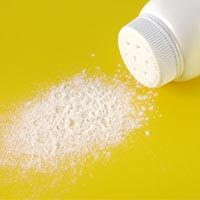
Throughout the ages women have been distorting their bodies in several manners usually for the approval of men.
In the 15th centruy, women would pluck their hailines to create higher forheads. Blonde hair was considered to be a sign of class and beauty so men and women would sit in the sun for hours, use bleach, saffron or onion dye to make their hair as blonde as possible.
Later on, a pale complexion was desirable, so white lead was used which was later found to be poisonous.
In the 18th century, people would wear wigs that would sometimes reach up to 3 feet into the air!
Skull moulding and head flattening was common in Eastern countries. the nose, ears and forehead were flattened to the head because it was considered beautiful. Infant's heads were flattened by two boards placed on either side of the head. This would make the head flat over the years and after a few years the boards would be removed.
Chinese women would bind their feet because it was considered beautiful and was needed to make a chinese woman available for marriage. This went on for nearly 1000 years.
Corsets were worn to create a false hour-glass figure. They would crush ribcages and disfigure internal organs. This also prevented proper breathing.
In the 15th centruy, women would pluck their hailines to create higher forheads. Blonde hair was considered to be a sign of class and beauty so men and women would sit in the sun for hours, use bleach, saffron or onion dye to make their hair as blonde as possible.
Later on, a pale complexion was desirable, so white lead was used which was later found to be poisonous.
In the 18th century, people would wear wigs that would sometimes reach up to 3 feet into the air!
Skull moulding and head flattening was common in Eastern countries. the nose, ears and forehead were flattened to the head because it was considered beautiful. Infant's heads were flattened by two boards placed on either side of the head. This would make the head flat over the years and after a few years the boards would be removed.
Chinese women would bind their feet because it was considered beautiful and was needed to make a chinese woman available for marriage. This went on for nearly 1000 years.
Corsets were worn to create a false hour-glass figure. They would crush ribcages and disfigure internal organs. This also prevented proper breathing.










 If someone is unhappy with a tattoo, it is important to note that the removal of one may be even more painful than the tattoo itself and it can be very expensive. A tattoo that costs $50 can cost about $1,000 to remove. There are different methods to remove a tattoo including laser treatments, abrasion, scarification and surgery.
If someone is unhappy with a tattoo, it is important to note that the removal of one may be even more painful than the tattoo itself and it can be very expensive. A tattoo that costs $50 can cost about $1,000 to remove. There are different methods to remove a tattoo including laser treatments, abrasion, scarification and surgery.







